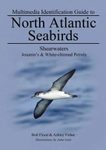Report
Out of Print
By: David Li Zuo Wei, Andrea Bloem, Simon Delaney, G Martakis and JO Quintero
276 pages, Tabs, figs, maps
![Status of Waterbirds in Asia Status of Waterbirds in Asia]()
Click to have a closer look
About this book
Related titles
About this book
The Asian Waterbird Census (AWC), conducted each year in January, is a waterbird and wetland monitoring programme initiated in 1987 within the framework of the International Waterbird Census. This report summarises the results of the AWC from 1987 to 2007, comprising counts at 6,705 sites in 27 countries. A total of 1,387 sites met at least one of two criteria of internationally important sites according to the Ramsar Convention. Of these, 312 sites were reported to support more than 20,000 waterbirds, and 1,382 sites recorded more than 1 percent of the biogeographic population of at least one species of waterbird.
In the most recent five years (from 2003-2007), a total of 2,963 sites were counted and 673 were identified as internationally important sites. A total of 671 sites recorded more than 1 percent of the biogeographic population of at least one species of waterbird, and 137 supported more than 20,000 waterbirds. Totals of 349 waterbird species and 74 wetland-dependent species were recorded during this period. Brief status accounts, accompanied by 328 maps, are presented for 396 species, including 52 Globally Threatened species and 24 Near Threatened species. Preliminary trend analyses using the statistical package TRIM suggest that four of the eight most numerous dabbling duck species in East Asia are in decline.
Customer Reviews
Report
Out of Print
By: David Li Zuo Wei, Andrea Bloem, Simon Delaney, G Martakis and JO Quintero
276 pages, Tabs, figs, maps
The only important regional monitoring effort is the Asian Waterbird Census. It was started in 1987 and more than 6700 sites have been counted at least once. Not only has much valuable information been collected, but networks of conservationists have been established throughout the region. I strongly recommend that anyone with an interest in bird conservation in the region (which is, strictly speaking, not conventional `Asia' but East and South Asia plus Australasia) obtain a copy of this book for reference. NGOs and government agencies should also be encouraged to conduct more detailed studies at sites where high numbers of waterbirds have been recorded and to ensure that these important sites are well protected and managed. Nevertheless, we are still gaining experience in this region, there is still room for improvement in census methodology, and the results should also be interpreted with care. --Simba Chan, IBIS


























![Les Forêts Inondées: Trésors du Delta Intérieur du Niger au Mali [The Inundated Forests: Treasures of the Inner Niger Delta in Mali]](http://mediacdn.nhbs.com/jackets/jackets_resizer_medium/18/185728.jpg?height=150&width=102)